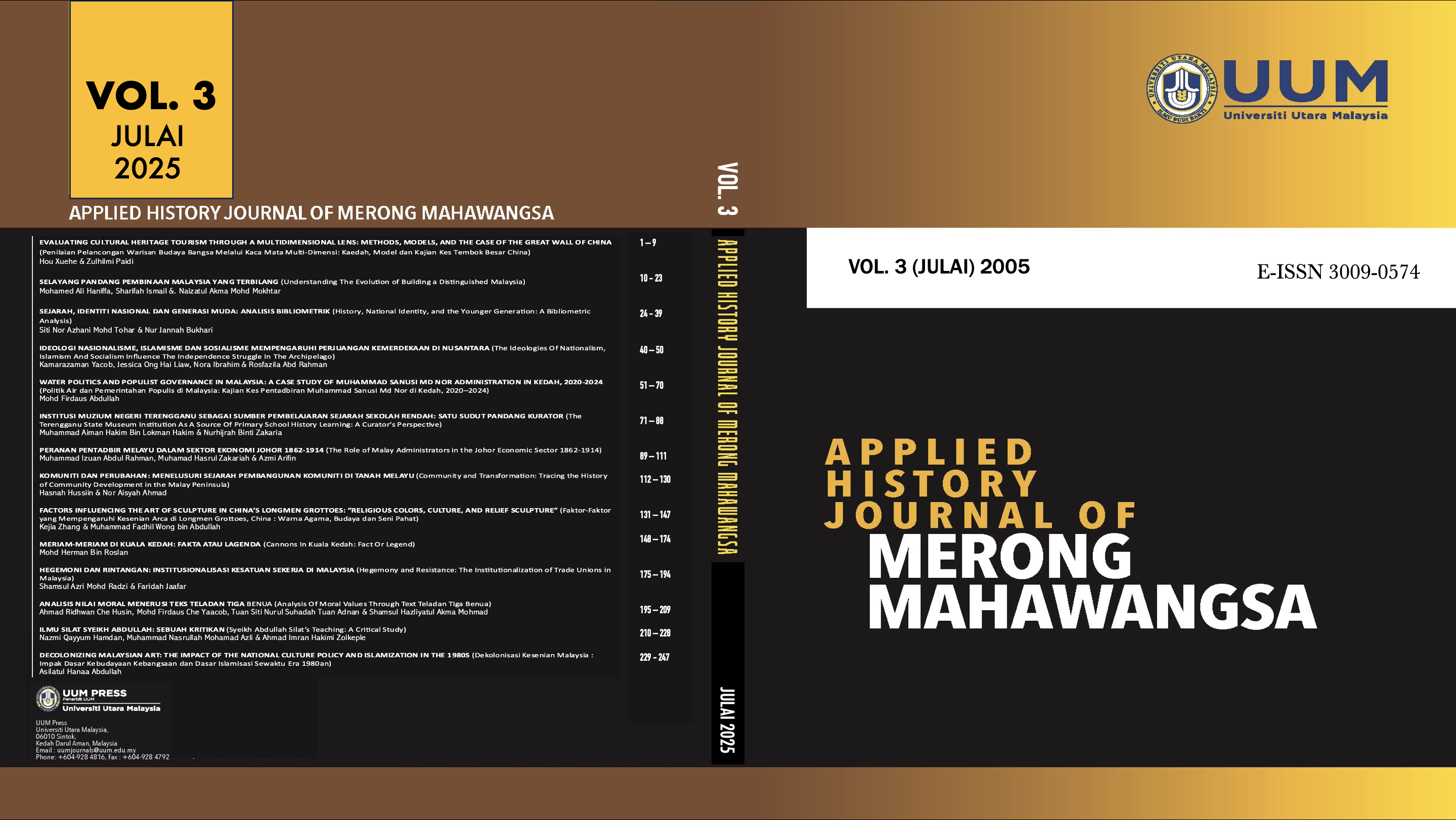HEGEMONI DAN RINTANGAN: INSTITUSIONALISASI KESATUAN SEKERJA DI MALAYSIA
(Hegemony and Resistance: The Institutionalization of Trade Unions in Malaysia)
DOI:
https://doi.org/10.32890/ahjmm2025.3.11Abstract
Makalah ini bertujuan menganalisis proses institusionalisasi kesatuan sekerja di Malaysia dari perspektif sejarah dengan mengaplikasikan kerangka teori hegemoni Antonio Gramsci. Kajian ini meneliti perkembangan gerakan kesatuan sekerja dari zaman kolonial British sehingga pasca-kemerdekaan, dengan memberi tumpuan kepada mekanisme kawalan hegemonik negara dan bentuk-bentuk rintangan yang digunakan oleh gerakan buruh. Melalui analisis kandungan deskriptif terhadap sumber-sumber sekunder, kajian ini mengenal pasti tiga fasa utama institusionalisasi: zaman kolonial yang meletakkan asas sistem kawalan buruh berasaskan kaum, tempoh Darurat (1948-1960) yang mengukuhkan mekanisme perundangan untuk “menjinakkan” kesatuan, dan era pasca-merdeka yang mengintegrasikan kesatuan ke dalam struktur pembangunan negara. Struktur hegemonik yang dibentuk melalui tiga mekanisme utama: perundangan yang mengehadkan, kawalan birokrasi, dan manipulasi ideologi telah berjaya mengekang potensi gerakan kesatuan sebagai agen perubahan sosial. Walau bagaimanapun, kajian ini juga mendedahkan pelbagai bentuk rintangan, dari konfrontasi langsung hingga ungkapan budaya yang mengkritik eksploitasi dan menuntut pengiktirafan maruah pekerja. Warisan kolonial yang membentuk struktur perburuhan dan kesatuan sekerja di Malaysia terus mempengaruhi dinamik hubungan antara negara, modal dan buruh, dengan implikasi yang mendalam terhadap keberkesanan perwakilan pekerja dalam sistem yang sedia ada.
ABSTRACT
This paper analyses the institutionalisation process of trade unions in Malaysia from a historical perspective by applying Antonio Gramsci's theoretical framework of hegemony. The study examines the development of the trade union movement from the British colonial era through to post-independence, focusing on the mechanisms of state hegemonic control and the forms of resistance employed by the labour movement. Through descriptive content analysis of secondary sources, this research identifies three main phases of institutionalisation: the colonial period, which established the foundations for a race-based labour control system; the Emergency period (1948-1960), which strengthened legal mechanisms to “domesticate” unions; and the post-independence era, which integrated unions into the national development structure. The hegemonic structure formed through three primary mechanisms: restrictive legislation, bureaucratic control, and ideological manipulation, has successfully constrained the potential of the union movement as an agent of social change. Nevertheless, this study also reveals various forms of resistance, from confrontation to cultural expressions that critique exploitation and demand recognition of workers' dignity. The colonial legacy that shaped Malaysia's labour and trade union structures continues to influence the dynamics between state, capital and labour, with profound implications for the effectiveness of worker representation within the existing system.
Downloads
Published
Issue
Section
License
Copyright (c) 2025 Shamsul Azri Mohd Radzi, Faridah Jaafar

This work is licensed under a Creative Commons Attribution 4.0 International License.













